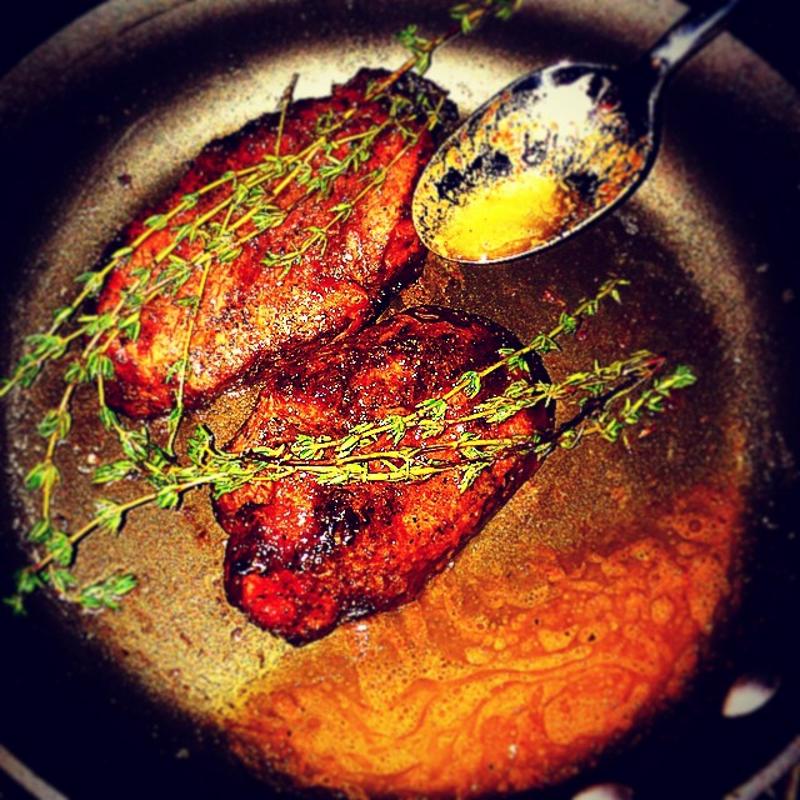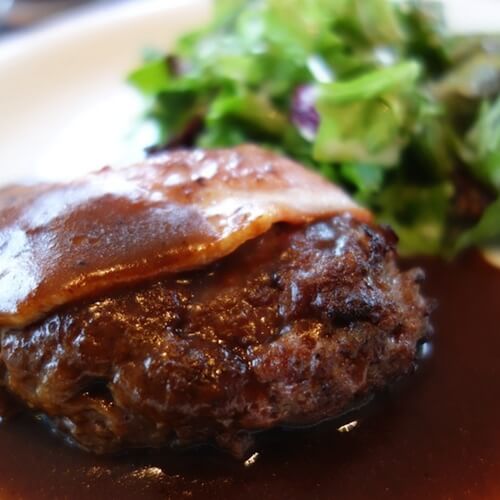The Secrets Of An Amazing Pan Sauce

Cooking with your stainless steel pan is a great way to make a flavorful entree, whether you’re cooking steak, pork loin, chicken, fish or another protein. But if you’re flipping the meat from the pan to your plate without a second thought about all those fatty, slightly burnt bits stuck to the bottom, you’re seriously missing out.
If you’ve ever tried to scrub that stuff off the bottom of the pan, you know it’s a pain. Luckily, as online culinary students soon find out, you can make this chore easier and your dish more flavorful by taking advantage of those remnants.
But first, let’s define that leftover layer: It’s called “fond” or “sucs,” Reluctant Gourmet explained.
Both names come from French words; “fond” translates to “base” or “foundation” in English – as in, this is the foundation of your amazing pan sauce. “Sucs” is short for the French word “sucre” which means sugar; those browned pieces stuck to the pan are caramelized sugars, proteins and fats.
Now that you’re all caught up on the vocabulary, here’s what you need for a delicious pan sauce:
1. Fat
Your fond should include about a tablespoon of fat. If there isn’t a lot of liquid left over, add some oil to make up the difference. If you have more than a tablespoon, drain off some of the excess liquid. Don’t lose those browned bits, though – that’s where your flavor is.
2. Aromatics
Now it’s time to add the aromatics. Garlic and shallots are popular options, as they tend to go with just about any protein. Throw in some herbs as well – rosemary and thyme are excellent selections, Epicurious suggested.
 Aromatics like thyme and garlic are excellent additions to any pan sauce.
Aromatics like thyme and garlic are excellent additions to any pan sauce.Feel free to stray from the typical garlic and rosemary if other flavors would suit your dish better. This is the time to deepen the flavor and tie in other ingredients. Drop in some chutney, whole-grain mustard or mushrooms for a more complex pan sauce.
Stir the sauce until the vegetables and herbs are soft and you can smell the spices.
3. Liquid
Once the aromatics are ready, you can add liquid to begin the deglazing process (this is the part that makes clean-up easier). Deglazing usually includes wine, though you can opt for juice, stock or cider if you prefer alcohol-free cooking. If you have no qualms about alcohol but simply don’t have wine on hand, brandy or fortified wines would work as well. It’s common to choose two of these liquids – typically wine and broth.
Add about a half-cup of whichever liquid you choose, then let simmer for around five minutes or until the sauce is reduced by about half. Use a wooden spoon to scrape the bottom of the pan. The acidity of the wine, plus the heated liquid, will help remove the fond from the pan and incorporate that flavor into the sauce.
4. More fat
At this point, it’s time to make your pan sauce into a creamy, wondrous topping for your meal. Whisk in butter or cream. A few teaspoons should be enough.
5. Thickener
This step is completely optional, and if you have a fairly thick sauce already, feel free to skip it. You can also skip it if you prefer your sauces to be thinner.
To thicken your sauce just a little bit more and add more creaminess, dissolve cornstarch in water, then add it to the pan, The Kitchn recommended. Dissolving the cornstarch in water first helps it evenly disperse throughout your sauce and prevents clumping. Let the sauce simmer for about 30 seconds.
Once your sauce is the perfect flavor and consistency, spoon it over your protein and dig in – you’ve earned it.



